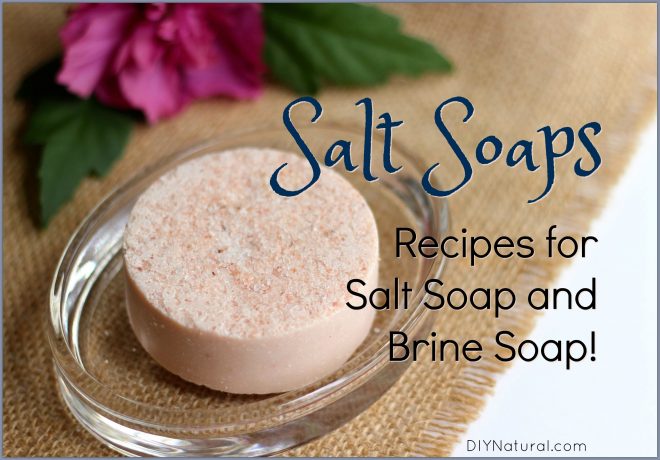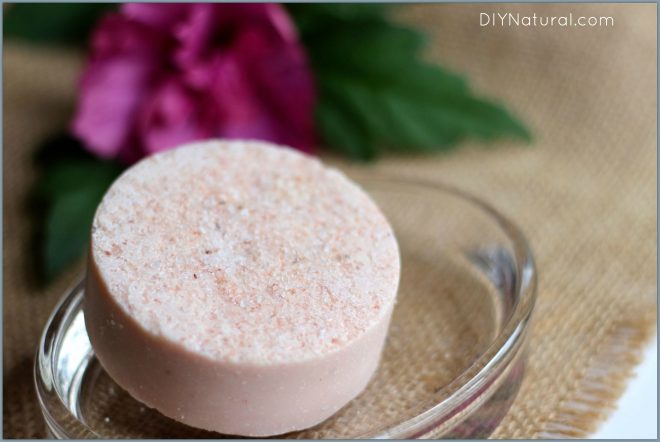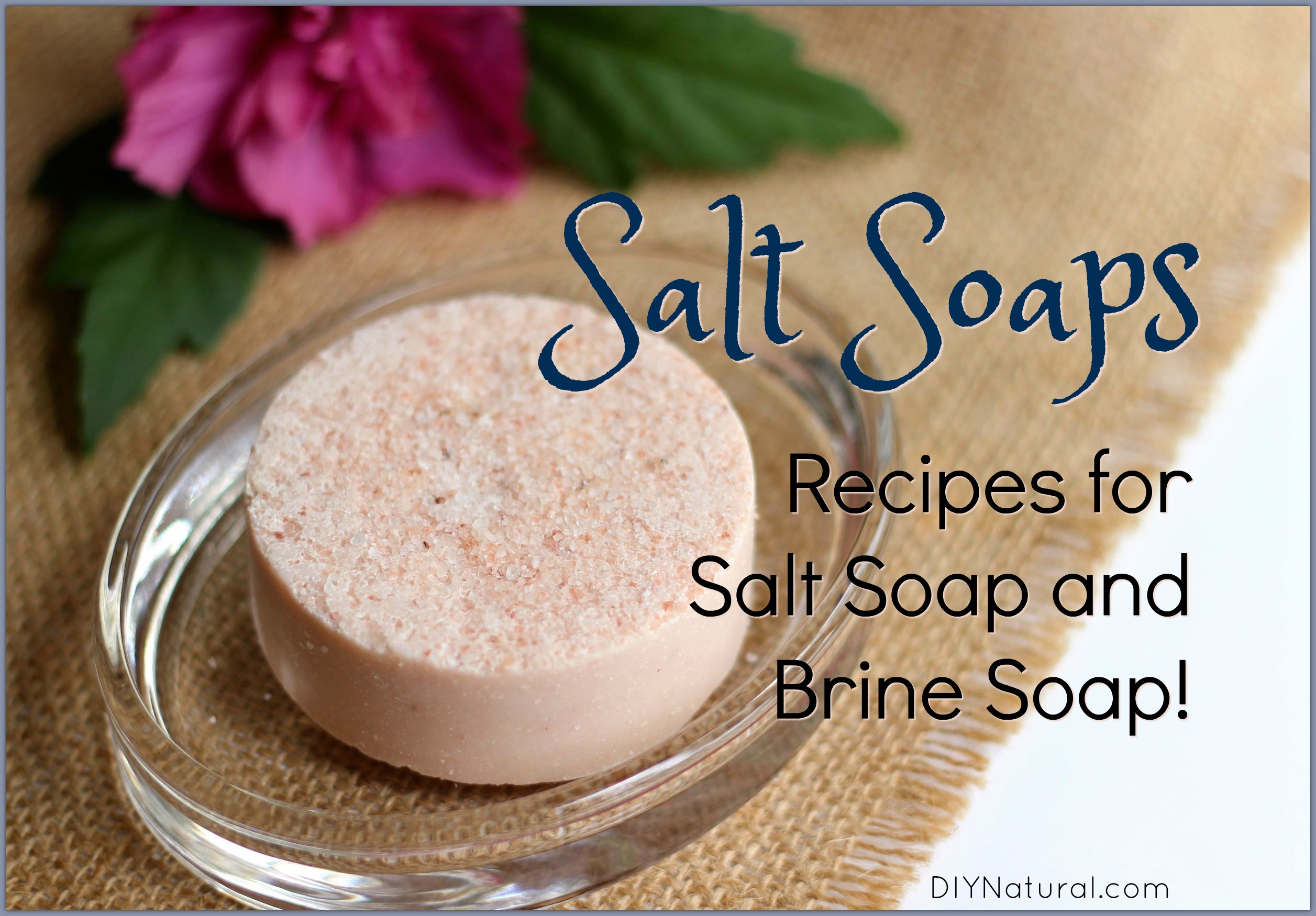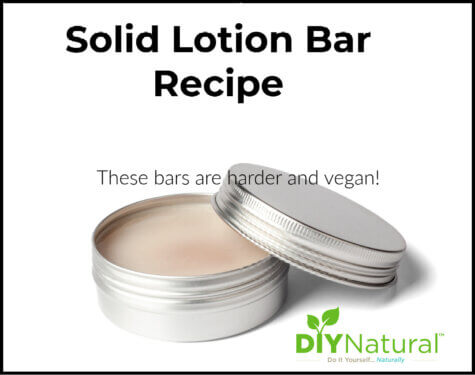
I’ve used salts in my homemade soap for years, but never knew the difference between salt soap and salt brine soap. I set out to learn the difference and the benefits of each type.
What is Salt Soap?
Salt soap is soap that has had salt added to it for a number of reasons. The salt, usually Himalayan Pink Salt, can help many skin conditions. Some of these include acne, dermatitis, bacterial or fungal skin infections, and body odor issues. Because the salt kills bacteria naturally, the salt bars can also be used as a deodorant bar. Furthermore, salt soap is gently exfoliating and can help detoxify the skin.
Other types of salt can be used, but Himalayan Pink Salt is the least likely to cause your soap to “weep,” or form moisture droplets on the outside of the bar. This can soften the soap causing it to not last as long as other bar soaps.
Salt Soap Recipe
This is my favorite (cold process) salt soap recipe.
Ingredients
- 15 ounces coconut oil (find organic unrefined coconut oil here)
- 18 ounces olive oil
- 12 ounces palm oil, or substitute sweet almond oil (find sustainably harvested palm oil here)
- 7 ounces safflower or sunflower oil (find organic safflower here or organic sunflower here)
- 3 ounces shea butter (find unrefined shea butter here)
- 8 ounces lye, a.k.a. sodium hydroxide (find it here)
- 16 ounces distilled water
- 2 ounces grapefruit essential oil (find organic grapefruit EO here)
- 1 ounce litsea cubeba essential oil (find organic litsea cubeba EO here)
- 16 ounces fine Himalayan Pink Salt (find it here)
- coarse Himalayan Pink Salt for top, optional (find it here)
Supplies
- gloves & eye protection
- newspaper for covering surfaces
- glass or stainless bowls
- hard plastic mixing spoons or spatulas
- silicone loaf pan (or other loaf pan lined with parchment paper) – individual soap molds do not work well for this soap
- kitchen scale
- stainless steel thermometer
- immersion blender
NOTE: If you are new to soap making, following the instructions in this article and this one will be helpful. Always follow safety directions when using lye. Note that in this recipe the ingredients must be weighed on a kitchen scale, not measured by volume.
Process
- Prepare your area by covering with newspaper and putting on gloves and a face mask if you wish. Prepare soap molds and set aside. (I use a loaf mold for this soap because it’s difficult to get into individual molds.)
- Begin by weighing out your water into a large glass jar or stainless steel bowl. Slowly pour the lye into the water, stirring right away. Keep stirring until it starts to clear. Set aside and continue to the next step.
- Weigh all of your base oils and melt them if necessary. Warm them enough to stay melted. Melt the shea butter and add to the oils.
- When both the lye and the oils reach around 100°F, you can mix them together. Stir for 5 minutes by hand to be sure as much of the lye comes into contact with as much of the oil as possible.
- Use an immersion blender for a few minutes to bring the mix to “trace.” This is when it looks like thick vanilla pudding. At this point, you can add the essential oils. (I chose specific essential oils because grapefruit is naturally balancing and has a great smell, while litsea cubeba is bright and uplifting while helping the grapefruit scent to last longer.)
- Mix to blend the essential oils in well and get ready to add the salt. Molds need to be ready before adding the salt because the soap will thicken up very fast!
- Add the salt and move quickly, getting it all into the mold before it sets up. Add a sprinkling of coarse salt on the top if you wish.
- Smooth out, cover, and set aside for 24 hours. Remover from the mold after 24 hours, cut into bars, and let it cure for 3-4 weeks. Wrap when fully cured.

How to Make Salt Brine Soap
Brine soap, also called Soleseife, is different from salt soap because the salt is dissolved in the lye water. It doesn’t have the exfoliating properties of salt soap, but it still shares all the other benefits. It makes a nice hard bar that is tough to lather. You can switch out the oils with other ones if you desire more lather. (More on that later.)
This soap will not set up as fast as the Salt Soap recipe above, so there is no need to rush through Step #7. (And you are not adding more salt during Step #7 either.) Since you can take your time pouring Brine Soap, you are free to use whatever molds you like.
Ingredients
- 9 ounces coconut oil
- 9 ounces olive oil
- 6 ounces sunflower or safflower oil
- 5 ounces shea butter
- 5 ounces castor oil
- 4 ounces avocado oil
- 5 ounces lye
- 12 ounces distilled water
- 4 ounces fine sea salt
- 2 ounces essential oil (I love a mixture of tea tree and eucalyptus)
Process
- Follow Steps #1 and #2 from the Salt Soap Recipe above.
- After the lye and water are mixed, add the salt directly to the lye/water mixture. Stir to dissolve.
- Proceed with Steps #3 – #8 above, although it won’t set up quite as fast, so you don’t need to rush.
Notes About Brine Soap
Because of the salt content in this bar, it won’t lather like standard soap. To get more lather, you can substitute palm oil for the sunflower or safflower and the avocado. Palm oil is used in soap making as it contributes to lots of fluffy lather. If you don’t want to use palm oil, you can increase the amount of coconut oil. NOTE: If you increase the amount of coconut oil, be sure to run the recipe through a lye calculator. The palm, safflower, sunflower, and avocado oils have close enough SAP values that you don’t need to worry about this. Only with the coconut oil do you need to recheck the amounts.
Salt soap can be very beneficial to your daily routine. Have you ever used it? Let us know what you think!
*******




I find your recipe intriguing. Thank you!
I have only made cold process old fashioned lye soap. I am old now and I still make it like my mother did. (She was born 1898) Although I have adapted it to making it in a plastic milk jug instead of a cast iron pot. So I have 2 Questions:
1. Does one regular loaf pan hold this whole recipe?
2. What material is the loaf pan you use made of? Cast iron? Plastic?
I love coconut oil and all the benefits from using it, but it does clog the drain…I have had several problem in my bathroom from using it to wash my face…just afraid to use it in the shower. Have you had an issue with that using it with this soap?
Hi Joyce,
During soapmaking, oils (like coconut oil) are saponified. This means they react with the lye and are turned into soap. It’s just like any other bar of soap that contains moisturizing ingredients – you will not have problems with it clogging drains. Hope that helps!
Question for you: I make goatmilk soap (ok…so I’ve only made 2 batches ever, but whatever!). Can I add the salt to my current recipe?
You’re off to a great start, Groovyoldlady! I’ve never tried it with goat milk soap, so I’m not sure. I’m thinking it will be fine, but it’s possible that the salt may change the texture. Do any of the other readers know? I’d be interested in finding out myself,
Thanks a lot for this information. But my problem is where do i start, i have passion for soap production be bathing soap or washing soap. Thanks
Thank you, Hassan! You can find all of my recipes in the archives on this website. In the search box, just put in soap and it’ll bring up my recipes along with other soap making recipes from other contributors.
Can this be made via hot process in the crock pot?
With the brine soap, maybe, Karen. I wouldn’t try it with the salt soap. The reason is because it sets up very quickly. Crock pot soap sets up quickly anyway, so I think you’d end up with a mess that you can’t get into the molds. Let me know if you do try it!
Hmmmm-ok, mourned give it a try and let you know. I like the idea of a exfoliating soap, just don’t want to mess with Cold process.
I tried making my brine soap in the crock pot… it didn’t go well at all. It just hardened WAY too fast and it was crumbly. I formulated a recipe I’ve used for over a year now, and with cold process its just perfect, but not for hot process. 🙁
Hi,
I have tried salt soap before and it would not lather at all. Did I do something wrong?
Nope, you did nothing wrong Delilah. Salt soaps usually won’t lather. But don’t worry. Soap doesn’t need to lather to work right. It’s only an aesthetic thing that we are all use to.
Good to know! Thanks:))
I am horribly allergic to coconut in any form, when changing that ingredient to something else, my soaps never work, do you know what can be used instead?
You can use another oil, Joy, but be sure to run the recipe through a lye calculator to be sure the amount of lye you have is correct for that oil. Coconut oil has a much higher SAP value, which is the amount of lye it takes to make that oil into soap. My guess is that you’d use less lye, but until you use the calculator, you don’t know how much. Your soap will likely not lather, since coconut oil is the main oil responsible for this. No worries though, you don’t need lather for soap to work right. It’s only an aesthetic thing.